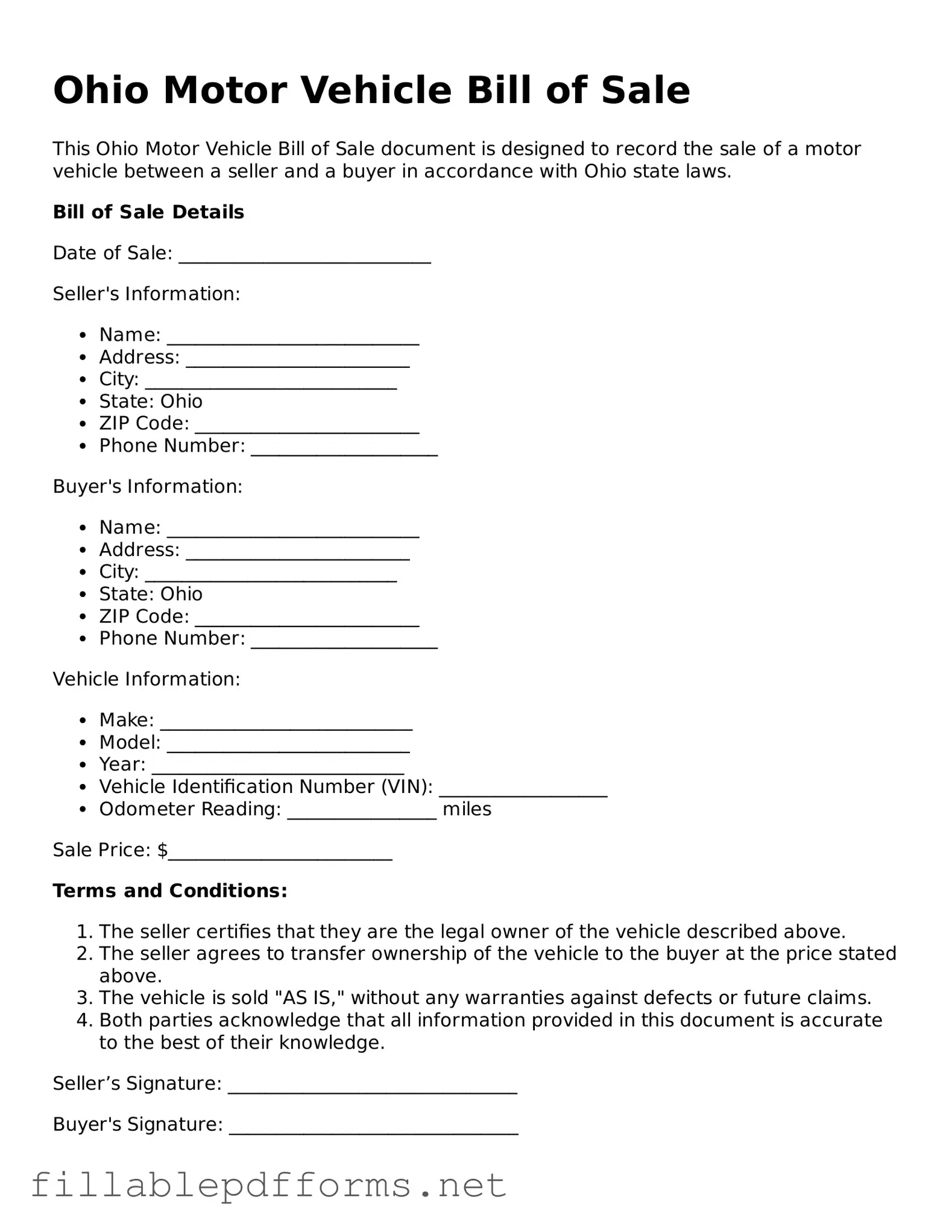Attorney-Verified Motor Vehicle Bill of Sale Form for Ohio State
The Ohio Motor Vehicle Bill of Sale form is a legal document that serves as proof of the transfer of ownership for a motor vehicle in the state of Ohio. This form is essential for both the seller and the buyer, ensuring that the transaction is recorded accurately and protects the rights of both parties involved. Understanding its components and importance can simplify the buying and selling process, making it smoother for everyone.
Launch Editor Here
